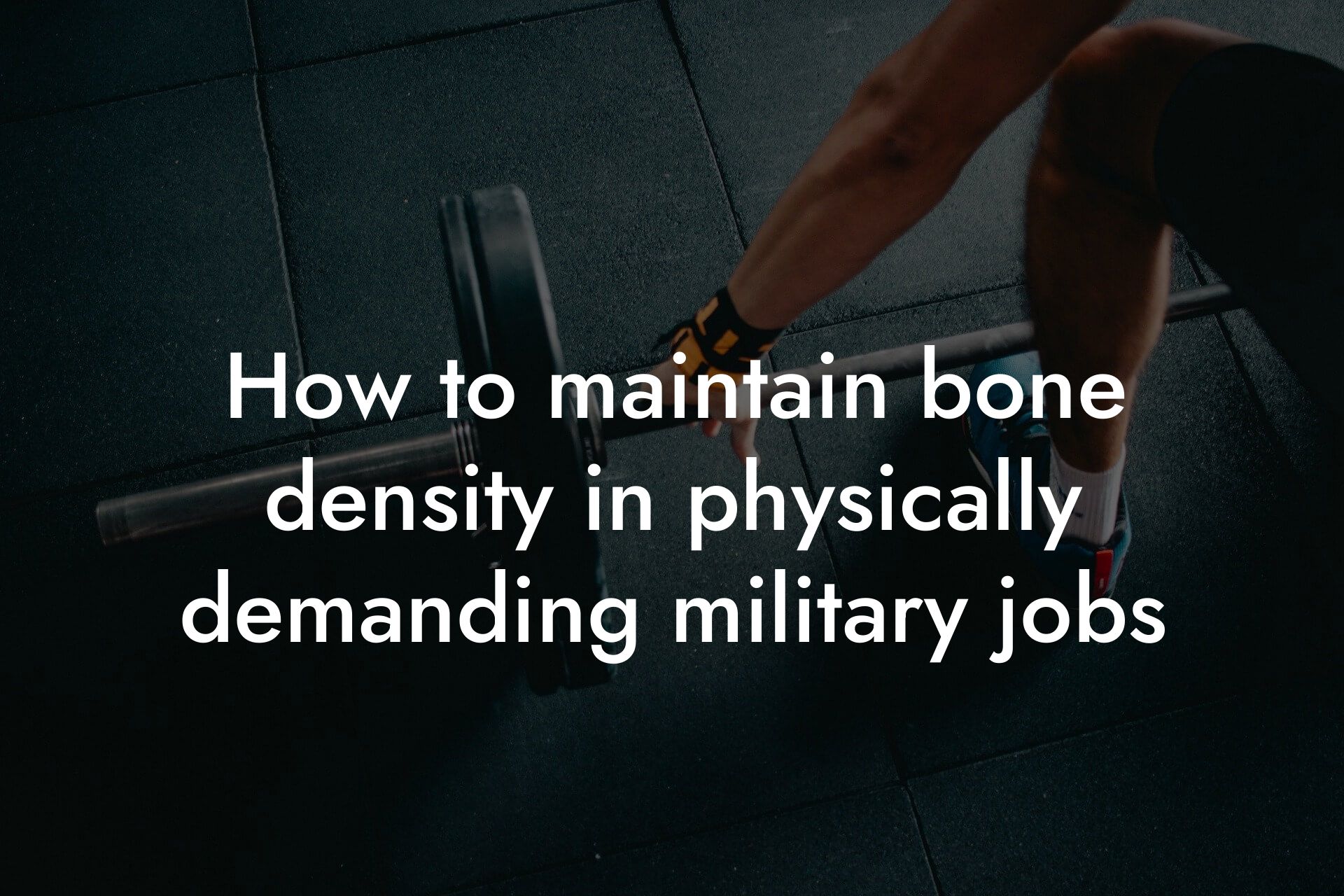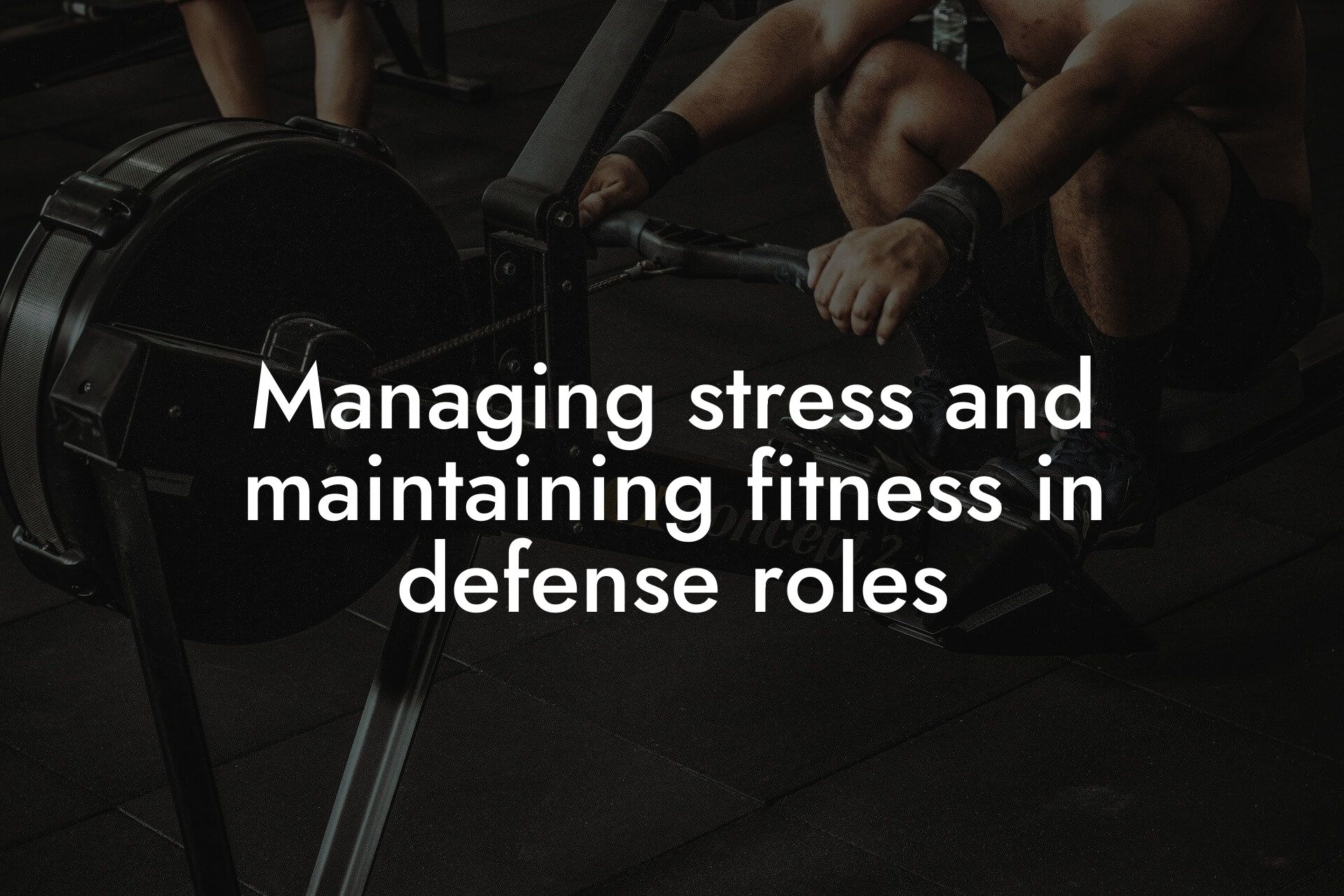Introduction
Military readiness is a critical component of national defense, and physical fitness is a crucial aspect of it. The ability of military personnel to perform their duties efficiently and effectively is directly related to their physical fitness levels. In this article, we will explore the importance of physical fitness for military readiness, the benefits of regular exercise, and how it impacts military performance.
Table of Contents
The Demands of Military Service
Military service is physically demanding, requiring personnel to perform tasks that push their bodies to the limit. Military personnel are expected to be able to perform a wide range of tasks, from combat operations to humanitarian missions, in diverse environments and under challenging conditions. They must be able to withstand physical stress, carry heavy loads, and operate in extreme temperatures, among other demands.
The Risks of Poor Physical Fitness
Poor physical fitness can have serious consequences for military personnel. It can lead to increased risk of injury, decreased performance, and reduced combat effectiveness. Additionally, poor physical fitness can also lead to decreased morale, increased absenteeism, and reduced retention rates. Furthermore, poor physical fitness can also have long-term health consequences, including increased risk of chronic diseases such as obesity, diabetes, and heart disease.
The Benefits of Regular Exercise
Regular exercise is essential for maintaining physical fitness and military readiness. Exercise provides numerous benefits, including improved cardiovascular health, increased strength and endurance, enhanced flexibility and mobility, and improved mental health. Exercise also improves sleep quality, reduces stress and anxiety, and boosts immune function. Furthermore, regular exercise can also improve cognitive function, including attention, memory, and decision-making.
Components of Physical Fitness
Physical fitness is comprised of several components, including cardiovascular endurance, muscular strength and endurance, flexibility, and body composition. Cardiovascular endurance refers to the ability of the heart, lungs, and blood vessels to supply oxygen to the muscles during sustained physical activity. Muscular strength and endurance refer to the ability of the muscles to generate force and sustain activity over time. Flexibility refers to the range of motion of the joints and muscles. Body composition refers to the percentage of body fat and lean body mass.
Assessing Physical Fitness
Assessing physical fitness is critical for identifying areas for improvement and tracking progress over time. There are several methods for assessing physical fitness, including the Army Physical Fitness Test (APFT), the Navy Physical Readiness Test (PRT), and the Air Force Fitness Test. These tests evaluate cardiovascular endurance, muscular strength and endurance, and body composition. Additionally, advanced technologies such as DEXA (Dual-Energy X-ray Absorptiometry) scans can provide a more detailed assessment of body composition, including bone density and lean body mass.
Improving Physical Fitness
Improving physical fitness requires a comprehensive approach that includes regular exercise, proper nutrition, and adequate rest and recovery. Military personnel should aim to engage in regular aerobic exercise, such as running, cycling, or swimming, for at least 30 minutes per session, three to four times per week. They should also incorporate strength training exercises, such as push-ups, pull-ups, and squats, two to three times per week. Additionally, military personnel should prioritize proper nutrition, including a balanced diet that includes plenty of fruits, vegetables, whole grains, and lean protein sources.
In conclusion, physical fitness is a critical component of military readiness. Regular exercise and proper nutrition are essential for maintaining physical fitness and reducing the risk of injury and illness. Military personnel should prioritize physical fitness and make it a central component of their daily routine. By doing so, they can improve their performance, reduce their risk of injury and illness, and enhance their overall health and well-being. At Tano Performance Group, we are committed to helping high-earning professionals achieve their physical fitness goals through our advanced DEXA scan technology and personalized coaching services.
Frequently Asked Questions
What is the main purpose of physical fitness in the military?
The primary purpose of physical fitness in the military is to ensure that service members are physically capable of performing their duties efficiently and effectively, even in high-stress and physically demanding situations. This includes being able to withstand the physical demands of combat, carrying heavy equipment, and completing tasks that require endurance, strength, and agility.
Why is physical fitness crucial for military readiness?
Physical fitness is essential for military readiness because it directly impacts a service member's ability to perform their duties, make quick decisions, and respond to emergency situations. It also enhances their overall health and well-being, reducing the risk of injuries and illnesses that can compromise their ability to deploy.
What are the physical fitness requirements for military service?
The physical fitness requirements for military service vary depending on the branch and job specialty. However, most branches require service members to pass a physical fitness test that includes push-ups, sit-ups, and a 1.5- to 2-mile run. Service members are also expected to maintain a healthy body mass index (BMI) and body fat percentage.
How does physical fitness impact military performance?
Physical fitness has a direct impact on military performance by enhancing endurance, strength, agility, and speed. It also improves mental toughness, discipline, and teamwork, all of which are essential for success in military operations. Physically fit service members are better equipped to handle the physical and mental demands of combat, reducing the risk of injury and improving overall mission effectiveness.
What are the consequences of poor physical fitness in the military?
Poor physical fitness in the military can have serious consequences, including reduced mission effectiveness, increased risk of injury, and decreased morale. It can also lead to disciplinary action, including extra training and duty, and in extreme cases, separation from the military.
How does physical fitness affect mental health in the military?
Physical fitness has a positive impact on mental health in the military by reducing stress, anxiety, and depression. Exercise has been shown to improve mood, enhance cognitive function, and promote better sleep, all of which are essential for maintaining good mental health.
What role does nutrition play in military physical fitness?
Nutrition plays a critical role in military physical fitness by providing the necessary fuel for energy, growth, and repair. A well-balanced diet that includes plenty of fruits, vegetables, whole grains, lean protein, and healthy fats is essential for maintaining optimal physical fitness.
How can service members improve their physical fitness?
Service members can improve their physical fitness by engaging in regular exercise, including cardio, strength training, and flexibility exercises. They should also focus on proper nutrition, getting enough sleep, and managing stress. Additionally, service members can work with fitness professionals and unit leaders to develop personalized fitness plans that meet their specific needs and goals.
What are some common physical fitness challenges faced by military service members?
Common physical fitness challenges faced by military service members include lack of time, inadequate resources, and competing priorities. Service members may also struggle with injuries, illnesses, and physical limitations that can make it difficult to maintain optimal physical fitness.
How can unit leaders support service members in their physical fitness goals?
Unit leaders can support service members in their physical fitness goals by providing access to fitness resources, including gyms, fitness classes, and personal training. They can also encourage a culture of fitness within the unit, provide incentives for physical fitness achievements, and lead by example.
What is the role of physical fitness in military recruitment?
Physical fitness plays a critical role in military recruitment by ensuring that new recruits are physically capable of performing the duties of military service. Recruits who are physically fit are more likely to succeed in basic training and are less likely to be injured or separated from the military.
How does physical fitness impact military career advancement?
Physical fitness can impact military career advancement by demonstrating a service member's commitment to their duties and their ability to lead by example. Service members who are physically fit are more likely to be considered for promotions and special assignments, and are seen as role models by their peers.
What are some common physical fitness myths in the military?
Common physical fitness myths in the military include the idea that only certain body types are suitable for military service, that exercise must be extreme to be effective, and that physical fitness is only important for combat troops. These myths can be harmful and discourage service members from prioritizing their physical fitness.
How can physical fitness be maintained during deployment?
Physical fitness can be maintained during deployment by engaging in regular exercise, even in limited environments. Service members can use bodyweight exercises, resistance bands, and other portable equipment to stay physically fit. They can also prioritize nutrition and sleep to support their physical fitness goals.
What are some physical fitness resources available to military service members?
Military service members have access to a range of physical fitness resources, including fitness centers, personal training, and group fitness classes. They can also access online resources, including fitness apps, videos, and tutorials, to support their physical fitness goals.
How can physical fitness be balanced with other military responsibilities?
Physical fitness can be balanced with other military responsibilities by prioritizing exercise and nutrition, and by finding creative ways to incorporate physical fitness into daily routines. Service members can also work with their unit leaders and fitness professionals to develop personalized fitness plans that meet their specific needs and goals.
What is the relationship between physical fitness and military discipline?
Physical fitness and military discipline are closely linked, as physical fitness requires discipline, motivation, and dedication. Service members who are physically fit are more likely to demonstrate discipline in other areas of their military service, including their duties, appearance, and personal conduct.
How can physical fitness be used to build unit cohesion?
Physical fitness can be used to build unit cohesion by engaging in group fitness activities, such as team sports, fitness challenges, and group exercise classes. This can help to build camaraderie, trust, and esprit de corps within the unit, and can improve overall unit performance.
What are some physical fitness challenges specific to certain military jobs?
Physical fitness challenges can vary depending on the specific military job, with some jobs requiring more endurance, strength, or agility than others. For example, special operations forces may require higher levels of physical fitness than administrative personnel.
How can physical fitness be used to reduce military injuries?
Physical fitness can be used to reduce military injuries by improving flexibility, strength, and endurance. This can help to reduce the risk of musculoskeletal injuries, which are common in military service. Additionally, physical fitness can improve reaction time and agility, reducing the risk of accidents and injuries.
What is the role of physical fitness in military retirement?
Physical fitness plays a critical role in military retirement by ensuring that service members are physically capable of enjoying their post-military life. Physically fit retirees are more likely to remain healthy, active, and engaged, and are less likely to experience chronic health problems.
How can physical fitness be maintained during military transition?
Physical fitness can be maintained during military transition by prioritizing exercise and nutrition, and by finding new ways to stay physically active. Service members can also access civilian fitness resources, such as gyms and fitness classes, to support their physical fitness goals.
Here are some related articles you might love...
- How to maintain bone density in physically demanding military jobs
- Nutrition strategies for maintaining energy in the field
- Managing stress and maintaining fitness in defense roles
- How to prevent injury through physical fitness in the military
- Balancing military duties with personal fitness goals
- Quick workouts for military professionals during downtime
- The role of DEXA scans in military health assessments
- The impact of body composition on tactical performance
- How to maintain fitness during deployment
Zak Faulkner
Zak Faulkner is a leading authority in the realm of physical health and body composition analysis, with over 15 years of experience helping professionals optimise their fitness and well-being. As one the experts behind Tano Performance Group, Zak has dedicated his career to providing in-depth, science-backed insights that empower clients to elevate their physical performance and overall health.
With extensive knowledge of DEXA technology, Zak specializes in delivering comprehensive body assessments that offer precise data on body fat, muscle mass, bone density, and overall physique. His expertise enables individuals to make informed decisions and achieve their fitness goals with accuracy and confidence. Zak’s approach is rooted in a deep understanding of human physiology, combined with a passion for helping clients unlock their full potential through personalised strategies.
Over the years, Zak has earned a reputation for his commitment to excellence, precision, and client-focused service. His guidance is trusted by top professionals who demand the best when it comes to their health. Whether advising on fitness programs, nutritional strategies, or long-term wellness plans, Zak Faulkner’s insights are a valuable resource for anyone serious about taking their health and fitness to the next level.
At Tano Performance Group, Zak continues to lead our Content Team revolutionising how professionals approach their physical health, offering unparalleled expertise that drives real results.




